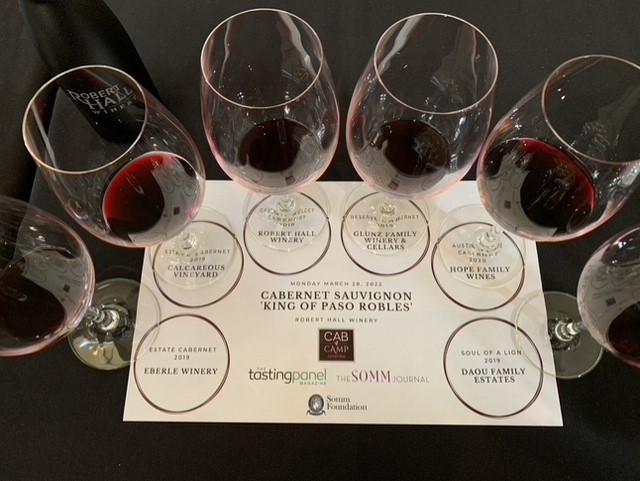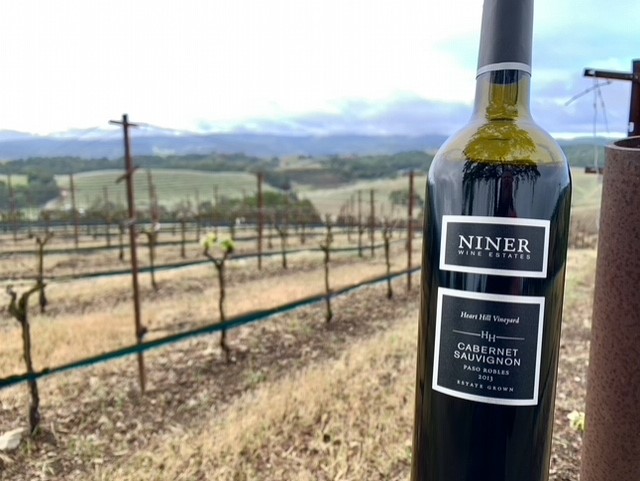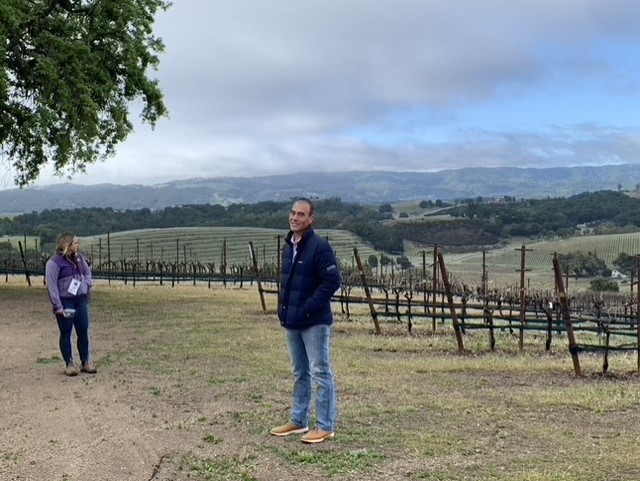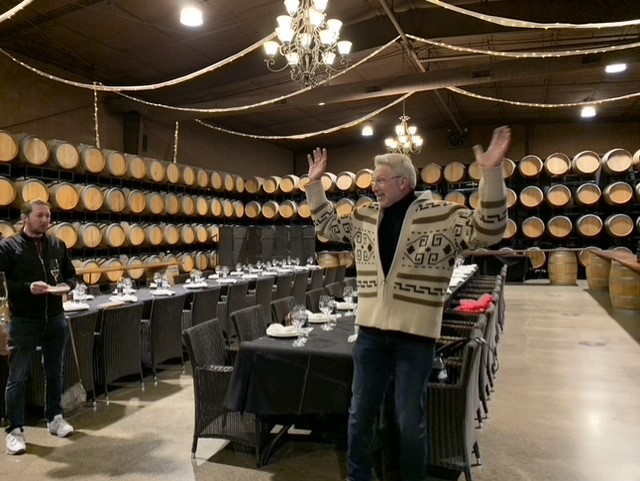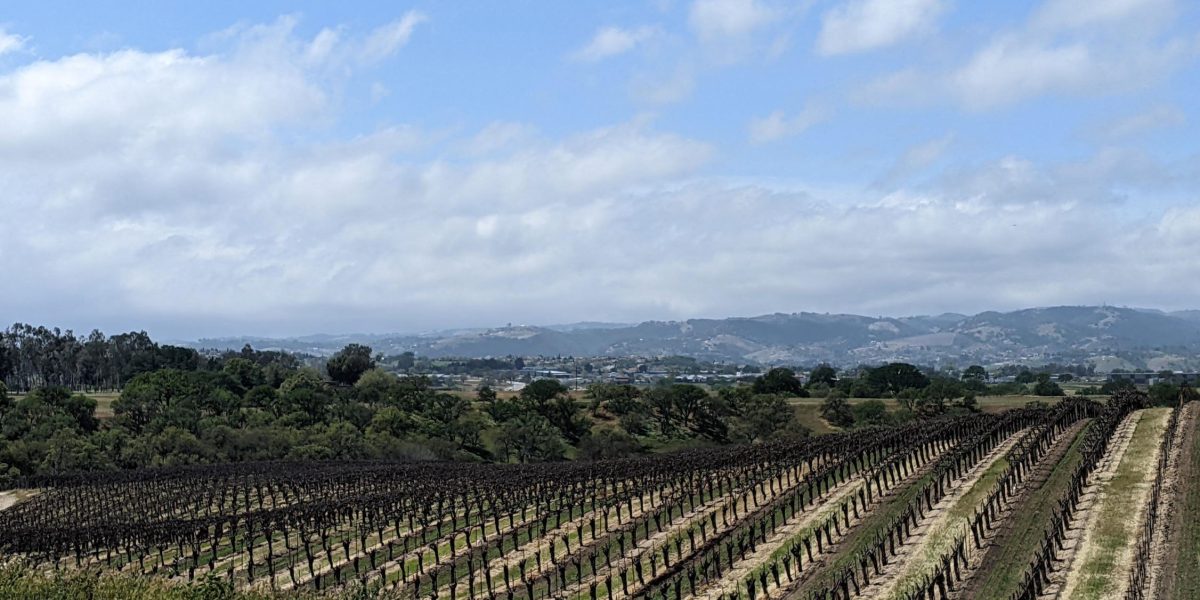
By Erik Nordstrom, Wine Director at 1776 Restaurant, Crystal Lake, IL
Education at every level has shifted dramatically over the last two years. It did not matter what segment of the population you were in; bedrooms became school classrooms, living rooms transformed into board rooms and if you were like me, a kitchen island was the gateway to wine regions across the globe. Through months of a shuttered restaurant, virtual classes became my saving grace as they enabled me to learn about regions and producers that I may have never known otherwise.
I was honored to be selected for CAB Camp Paso Robles. While virtual education was a useful placeholder, I could not wait to travel and experience a region I had never visited. Descriptions and photographs on a screen cannot duplicate physically immersing yourself in a vineyard. that cannot be captured through a video call. Having the opportunity to engage with a community of winemakers, farmers, and colleagues who share my same passion is one that was genuinely missed.
Though rooted in tradition, the field of wine is always evolving. Thus, continuing our education as professionals is a necessity. Brix, soil types, barrel selection, etc. are all things that we are expected to master. However, when working the restaurant floor, I have never had a guest question the brix at harvest for a certain wine on my list. I am, however, asked almost daily about producers or vineyards. To paraphrase Jeff Faber from Opolo Vineyards “If you bring someone a cake, no one asks what type of bowl was used when it was made. Or if it was made using Himalayan salt.” I found that statement slightly profound, but completely true. With Jeff’s statement, CAB Camp took on an additional meaning. Along with education and finding new producers, it was now about finding connections to the guests at my table.
My CAB Camp experience was a positive one. I thoroughly enjoyed learning about new producers during each winery visit and panel discussion. One such producer was Glunz Family Winery, who presented during “Cabernet Sauvignon – King of Paso Robles”. Owner, Matthew Glunz explained the family’s history in the industry that dates back to 1888 when Louis Glunz started a small wine, beer and spirits shop in Chicago. It is refreshing to learn that four generations later, all parts of the family are still involved in the business. During the panel, I took note when Matthew shared that his young children join the team during harvest picking the grapes alongside him. That when the fruit comes into the winery, his parents often come down to assist in sorting, which is all done by hand. It is a real family affair.
The 2019 Glunz Family Reserve Cabernet comes from a three–acre plot on their estate. A blend of two Cabernet clones with the addition of Petit Verdot, the wine has nicely blended dark toned fruit notes. It is a well–structured wine that is soft, yet has nice weight on the palate and powdery tannins that emerge on the finish. I am confident this wine would work well with a lot of dishes I serve. A large portion of the demographic I see is younger professionals who often dine with their children or parents. Tying in the Glunz value of family to those guests as they select a new wine is a great connection to connect producer to guest.
At Niner Wine Estates as the “Corks” marveled at the views from high atop Heart Hill Vineyard, we had the opportunity to listen to winemaker Patrick Muran. With a stick–drawn arrow in the soil, Patrick pointed out some references to help us understand where we were standing. He also pointed out a few famous neighbors like Saxum and Booker, two producers famous for their Rhone wines. Niner did not follow suit. Knowing that the area could produce great grapes, they shifted directions and instead planted Bordeaux varietals. Patrick educated us about the vineyard’s soil combination across the rolling hillsides. He also detailed the decisions to plant certain varietals in certain blocks due their aspects and orientation in regards to sun exposure. There was a lot of consideration put into the vineyard design in order to achieve optimal ripeness for each varietal planted.
The 2013 Heart Hill Vineyard Cabernet we sampled that chilly morning was one of my standout wines from the trip. Patrick referred to the 2013 Heart Hill Cabernet as a “benchmark wine” for him, one that he can learn from as it develops over time to make better wines moving forward. The 2018 Niner Fog Catcher we sipped during the “Beguiling Blends” panel at Justin Winery was another favorite. Both wines were very well–balanced with depth of flavor that was enjoyable and intriguing. I can see both of these wines being successful on a restaurant list; guests looking for “a new Cabernet” would be thrilled with these selections. I am a firm believer that people want to be inspired and the stories behind these wines can do just that. Similar to surrounding yourself with successful people when you have a goal of being successful yourself, Niner chose their estate vineyard accordingly. They set themselves apart and made their own success by doing something different than their neighbors. They are also learning from what they have done in the past, which is something we all do. I look forward to sharing these pieces of the Niner story to make a connection with my guests.
The devastation from fires in Napa Valley and the surrounding areas has been horrible these past few years. I fear quality Cabernet from that region will be scarce in the market for a few vintages. Thus, I am thankful for the SommFoundation and the Somm Journal to have had this opportunity in Paso Robles. It has broadened my knowledge of the region and has let me learn first–hand stories from producers who are new to me. Producers that I can now confidently suggest to guests as alternatives for quality Cabernet outside of their more familiar regions. I look forward to sharing the stories of my new found friends with guests for years to come.
